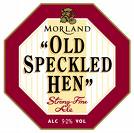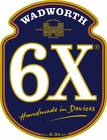Recipe Update – Theakston old Peculier (10/10)
 With the sad passing of my DoA Shakespeare stout clone I decided to crack open an early sample of my Theakston Old Peculier clone, the first of the Old Ales series started back in the beginning of February. Well its been at least 2 months so it must be worth a try. Old Peculier truly is a classic with its rich, almost porter like quality with heavy molasses and bitter sweet fruit.
With the sad passing of my DoA Shakespeare stout clone I decided to crack open an early sample of my Theakston Old Peculier clone, the first of the Old Ales series started back in the beginning of February. Well its been at least 2 months so it must be worth a try. Old Peculier truly is a classic with its rich, almost porter like quality with heavy molasses and bitter sweet fruit.
What a way to begin a series. The English Pales series started late in 2009, got off to a slow start, finishing strong with a great Flowers Original clone and a Fullers London Pride to die for. In the case of the Old Ales I seem to have struck gold early. I must admit to being a little worried about this brew. The recipe had a lot of ingredients, some of which I had never worked with before including black molasses and Lyles Golden Syrup. The speciality grains also packed a punch with Chocolate, Black, Crystal and Torrified Wheat all included.
The biggest concern was the use of Trappist Ale, a real leap for this recipe. We were looking for a high attenuating, high fruit yeast, a characteristic that is hard to find. With some inspiration from the Pretty Things Old Ale, inspired by Theakston Old Pecuilier amongst others, and their use of German and Belgian strains we were lead to the Belgian ale strains. The Trappist Ale yeast worked, I am now convinced Old Peculier uses Belgian yeast as the final flavor characteristics in this clone are on the money with the original.
First the colour and head. Head is thick, rich and a caramel colour similar to the original. Colour is as close a dark Old Ale can get. It is almost indistinguishable from the original. The mouthfeel is that of a big Ale. Smooth at the front, hitting you hard at the back. Watch out cause this ale packs a punch.
So what about the taste, something a little difficult to demonstrate on a blog. It is close, which is why I gave the brew a 9/10. As a reminder the The Real Ale Almanac presents the following as the flavour profile we are trying to recreate:
Dark and vinous old ale bursting with complex fruit flavours. Massive winey bouquet of rich fruit with peppery hop notes. Toffee and roast malt in the mouth, deep bitter-sweet finish with delicate hops
The taste definitely lives up to the billing. All of the above is in this clone, its hard to explain how complex this ale is. The hop load is lite considering the amount of malt and the final alcohol content but the peppery Fuggles come through perfectly. The toffee and roasted malt hit the front of the palate but give way to heavy fruit at the end laced with the peppery hops. Quite delicious.
Despite my initial concerns around the ingredients the ale was easy to brew. The White Labs Trappist Ale yeast (#WLP500, Attenuation 75-80%, Flocculation: Medium-low) worked as advertised, the ale went into the primary with an OG of 1064, was in the secondary for 3 weeks and in the bottle for 4 weeks with the FG coming in at 1012 producing a whopping 7% ABV (the original 5.6% so a little upgrade here but not something I am complaining about).
This recipe is going to be posted on the permanent recipe page, the first of Old Ales to get there. 1-1 is not a bad start. In a week or so we will get to try the Speckled Hen, another popular brew. There are many eyes on the outcome of this batch and I hope it lives up to expectation. 🙂

